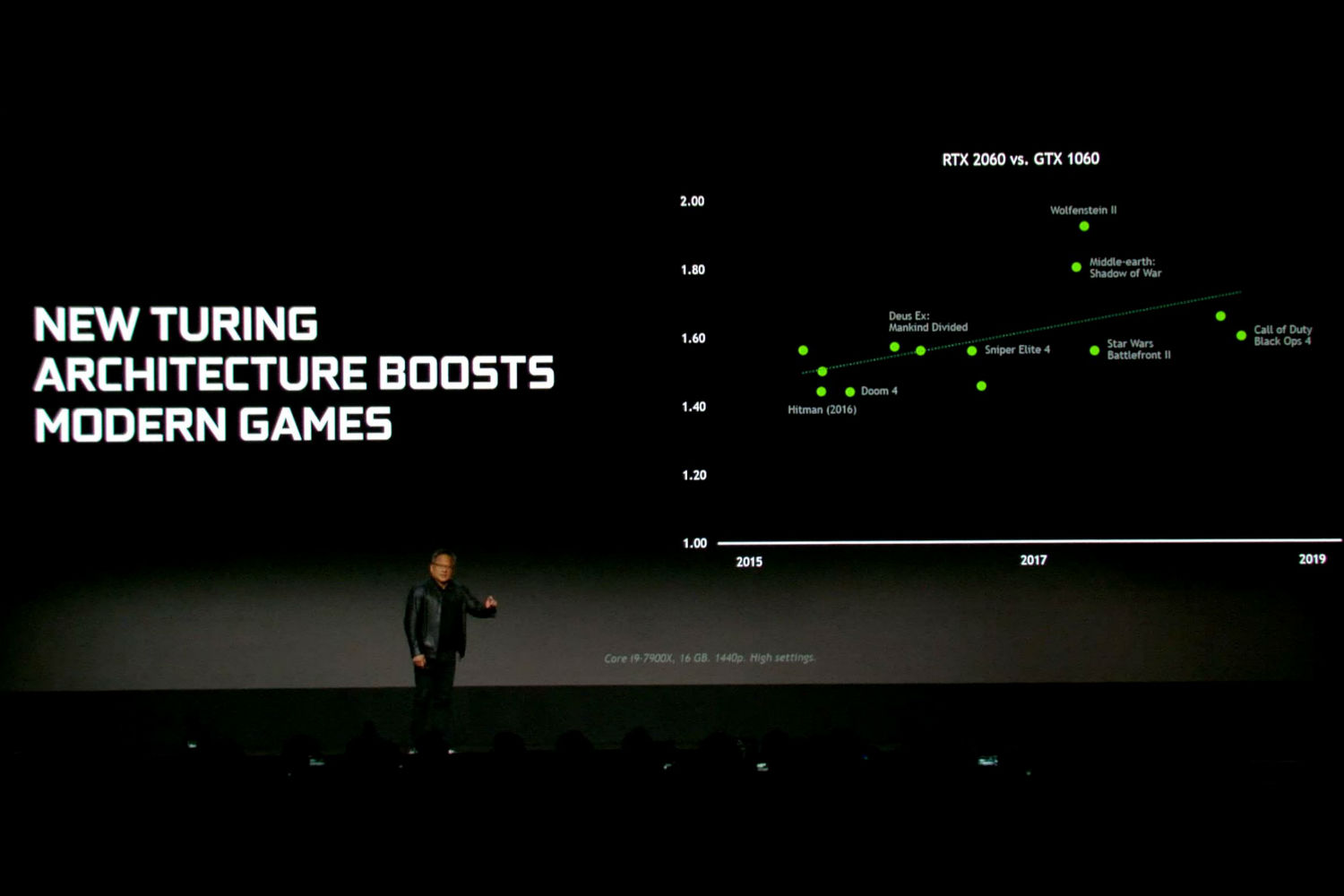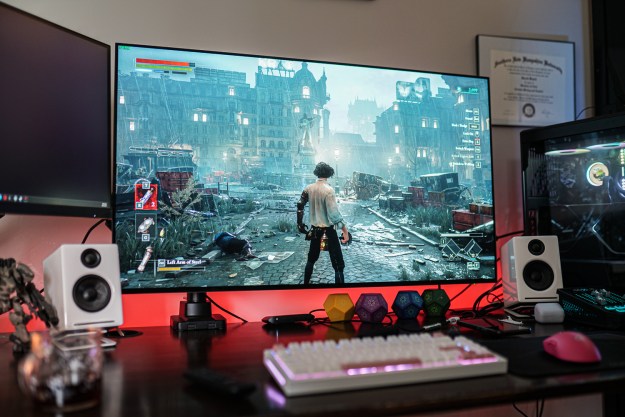
At CES 2019, Nvidia revealed the newest card in its series of GeForce RTX GPUs, the RTX 2060. Rumors had pointed toward the possibility of the release of a GTX 1160, which might forego the advanced features present in RTX. But instead, Nvidia has developed and announced a $349 version of its RTX graphics.
Nvidia CEO Jensen Huang spent the first hour of the presentation recapping on the past year of RTX technology, highlighting games like Battlefield V and Anthem. These are two very high-profile games that feature RTX features. Battlefield V supports both ray tracing and DLSS, while Anthem supports only the latter.
More CES 2019 coverage
- Everything Nvidia announced at CES, including mobile RTX, the RTX 2060, and more
- HP Omen 15 (2019) gaming laptop: Our hands-on review
- Huawei MateBook 13 hands-on review: A MacBook Air for Windows fans
- Samsung’s new Notebook Odyssey packs next-gen RTX graphics in a thin frame
The card looks nearly identical to its older brothers, the RTX 2070, 2080, and 2080 Ti, with a dual-fan setup and clean design. Nvidia’s RTX 2060 features 240 tensor cores with 52 teraflops of deep learning power, 5 giga-rays of real-time ray tracing, and 6GB of GDDR6 RAM. Not surprisingly, Nvidia didn’t spend too much time comparing how the 2060 compares to the more high-powered cards. As Nvidia noted, real-time
To reassure the audience that the card could handle that sort of task, Nvidia spent a considerable amount of time showing how DLSS could reverse the negative performance effects of ray tracing. How many games support both features? Right now, not many.
It looks like the RTX 2060 will offer a significant performance gain over the 1060. It’ll be 60 percent quicker in most games, according to Nvidia. More impressively, Nvidia says the card bests the GTX 1070 Ti. That’s a card that was released at an MSRP of $449, and still sells for near that at most online retailers.

The RTX 2060 is much less expensive at $349, a full $100 less than the GTX 1070 Ti. However, the RTX 2060’s price is $150 more than the least expensive GTX 1060 — so while the most affordable RTX looks like a good performance value, it’s more of a mid-range card than budget hardware.
The RTX 2060 will be available starting on January 15 and will be featured in a huge number of systems from companies like Alienware and Acer. As usual, a glut of third-party options will also be available in various designs and at variety of costs.
As mentioned, only some games support RTX features. Luckily, you’ll get one of those games with the card. Nvidia is offering a bundle with either Anthem or Battlefield V (your choice) bundled with the card. That offer will also be available for the RTX 2070. RTX 2080 and 2080 Ti buyers get an even better bundle, as they receive both games instead of having to choose.
Editors' Recommendations
- RTX 4090 owners are in for some bad news
- Nvidia RTX 50-series graphics cards: news, release date, price, and more
- GPU prices are back on the rise again
- 5 GPUs you should buy instead of the RTX 4070
- Nvidia is bringing ray tracing and DLSS 3 to your car



